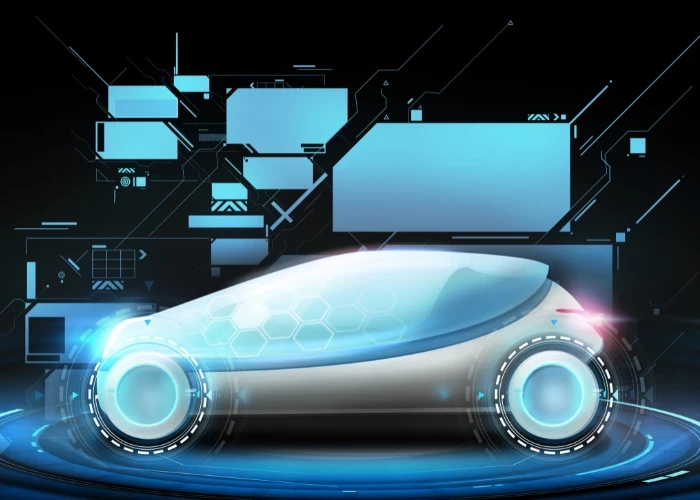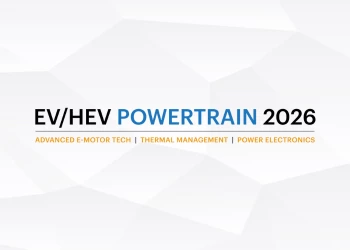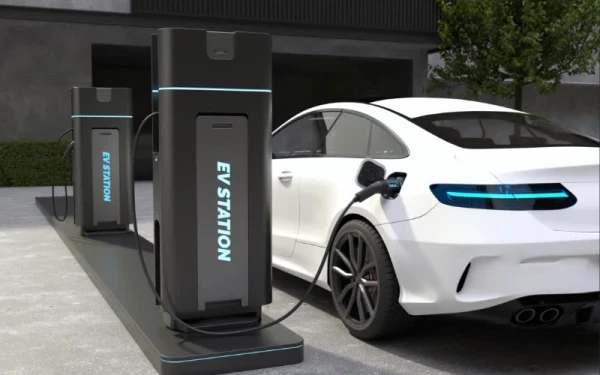Automotive IQ Guides: Electric Vehicle platforms
What does the future of mass-market cars look like once the majority are powered by electricity?
Add bookmarkAn overview of Electric Vehicle platforms
While the demand for, and sales of, electric vehicles (EVs) is on the increase, manufacturers are having to face the harsh reality that, for now at least, most OEMs do not make a profit from the sale of EVs.
In fact, according to McKinsey and Company, these vehicles often cost $12,000 more to produce than comparable vehicles powered by internal combustion engines (ICEs) in the small- to midsize car and small-utility-vehicle segments. These are costs that, apart from a few premium models, OEMs cannot recover.
Even though many industry insiders point to the high, but rapidly decreasing, battery costs as the main reason for higher EV prices, many manufacturers are finding ways to compensate for these costs; including designing the EV on a modular and scalable, dedicated platform.
As a consequence, OEMs have reached a crossroads in vehicle platform design, with a number starting to invest in native, or purpose-built, EV platforms, while others choose to produce EVs based on modified ICE-vehicle architecture.
According to McKinsey’s 2019 report “Making electric vehicles profitable” a purpose-built EV platform is simpler to assemble and could deliver up to $600 in savings per vehicle in lower fixed-cost allocation. These savings stem from having fewer components to assemble in an optimized EV platform and requiring less capital expenditure in EV-only plants, versus complex plants that combine ICE-vehicle and EV lines.
Moreover, the study also suggests OEMs could reduce costs by $5,700 to $7,100 through pursuing strategic ‘decontenting’ of vehicles built on dedicated EV platforms.
What is the future of electric-only platforms?
Purpose-built EV platforms are lower in material cost and allow better performance in range, acceleration, and interior space. They do, however, come with additional investments in new, standalone platforms leading to higher fixed-cost allocation – especially when produced in lower volumes.
An automaker building about 50,000 units over five years, on a dedicated platform, would need to save more than $4,000 per vehicle in direct materials cost to recoup the estimated $1bn in incremental fixed costs. Today’s mass-market EVs typically sell at volumes between 30,000 and 80,000 vehicles globally.
On the other hand, OEMs that choose to produce a BEV or PHEV on a modified ICE platform to limit capital investment and allow for flexible manufacturing will often have to sacrifice higher material costs driven by the overdesigned platform and face challenges in battery packaging, not only in the same capacity, potentially sacrificing range, but also in a less cost-efficient manner, making them less exciting to consumers.
Given that the rate of uptake of EVs is by no means certain, OEMs are hotly debating the choice of a pure EV platform versus a versatile platform that can house both EV and ICE powertrains.
This poses some interesting questions regarding the future of the electric car:
- Which electric car manufacturers prefer the ICE-based EV architecture?
- As the leader in the flexible modular EV platform what is VW’s MEB?
- Who are the early adopters of the dedicated modular and scalable EV platform?
Which carmakers have the best EV platforms?
Following the dedicated, scalable platform route, VW Group intends to build EVs of all sizes using many of the same parts so it can make its e-models profitable. The company intends to build MEB cars in eight locations globally by 2022 and predicts it will sell 15 million vehicles on the platform in the next decade.
But what if it doesn't? If the EV demand does not materialize, Wolfsburg could have a serious problem.
Many manufacturers are painfully aware of the risk. "If we predict the success of the 3 Series, we are pretty much spot on," Oliver Zipse, the new CEO of BMW Group, said just before his appointment in July. "Predicting electromobility is much more difficult."
BMW, along with other OEMs such as Jaguar Land Rover and PSA Group, has chosen not to go for VW's solution of a stand-alone platform. Instead, it is creating flexible platforms that can be adapted to both combustion and electrified drivetrains.
Other automakers following this route include:
- Volvo with the XC40, which is based on the Compact Modular Architecture (CMA) that the company developed with Chinese sister brand Geely. This will be superseded by the second-generation Scalable Product Architecture (SPA 2), which will debut with the launch of the third-generation XC90 flagship due in 2021
- Great Wall Motors’ WEY Pi4 Platform which is the company’s New Energy Vehicle solution that covers plug-in hybrid, electric drive and hydrogen energy systems
Following this strategy allows production to be easily adapted to build different drivetrains in one plant without losing efficiency. What is more, by keeping platforms flexible, companies can increase or reduce production of a particular drivetrain according to demand.
But then again, choosing a universal platform that underpins flexible architectures may undermine the performance of a brand’s first wave of EVs, thereby creating negative customer perceptions of the manufacturer’s ability to deliver competitive eMobility solutions.
However, an electric car built on a dedicated platform could end any unfavorable comparisons to its cheaper combustion-engine version. An automaker that builds on a unique platform can market the car quite differently from a similar-size combustion-engined model. That will be important given that, for a few years yet, the expense of the battery pack will force the price the electric car higher.
Explaining its choice of the MEB, VW states that the Modular Electric Toolkit jettisons all the ballast of the fossil age, enabling fundamental changes to everything from body design to interior packaging.
According to Tim Urquhart, principal automotive analyst at IHS Markit: "In an ideal world, you would do everything on a bespoke platform. The whole point of an EV platform is that it doesn't have to be complex. You have the skateboard platform and have a blank canvas. It will afford you many more advantages."
VW’s MEB electric vehicle platform
How it sets the benchmark in scalable modular design – not only is it cheap, but it is flexible
Having chosen to avoid the complexity of a dual-purpose platform the Volkswagen Group has invested $7bn in the MEB, supporting the manufacture of everything from compact cars to large minivans. Using many of the same parts to speed up the crucial economies of scale the company believes the strategy will enable it to make EVs profitably.
Moreover, using the MEB architecture VW claims the ID3 will be a car "for the millions and not the millionaires," emphasizing the affordability of the car for the everyday buyer. The company also plans to offer an eight year/160,000 kilometer warranty on the ID3’s battery pack.
At the 2019 Frankfurt Motor Show Volkswagen rolled out the production version of the ID3. With a starting price of “under €30,000” or around $33,180, the ID.3 will come in three variants offering between roughly 205 and 340 miles of range.
Demonstrating the flexibility of the platform, the base version which has a 45kWh battery will offer 330 kilometers or 205 miles of range, while the two larger capacity variants, will feature 58kWh and 77kWh batteries, and will respectively offer around 420 and 550 kilometers (or 261 and 340 miles) per charge.
The ID3 is the first in a lineup of ID-branded cars to be rolled out over the next few years, many of which have already been previewed by concept cars: the I.D. Crozz crossover SUV, the I.D. Vizzion sedan, the I.D. Roomzz SUV, and the relaunched iconic I.D. Buzz microbus and I.D. Buggy dune buggy will all be built on the MEB platform.
According to Tino Fuhrmann, the head of the MEB project, the flexible and modular platform provides an economical way to build different kinds of VW electric cars with very little complexity:
- The wheelbase can be stretched
- The track width is varied by making changes to the suspension, including to the lower control arms
- Additional length could be added between the pedals and the front axle for premium vehicles such as the I.D. Vizzion
Even suppliers appreciate the virtues of the MEB: “VW is way ahead on cost with MEB,” said Ulf Sudowe, R&D director for chassis at Gestamp, which builds battery boxes and chassis parts for the platform. "MEB will be the benchmark for everyone," he said, adding "it's very good on the price perspective."
For example, all MEB models except the minivan will use the same control arms, saving money on dies. Sudowe estimates that MEB is around half the cost of the EV-only platform Jaguar Land Rover developed for the Jaguar I-Pace.
Nevertheless there remains a glimmer of uncertainty with suppliers being asked to be more flexible with EV-specific parts; just in case the actual numbers needed are lower than quoted – or higher. Gestamp chairman Francisco Riberas recently told Automotive News Europe that VW has already doubled its order of battery boxes for MEB cars to 570,000 a year.
This confidence is partly because it has the scale – even more so now that Ford has agreed to use MEB for a range of European electric cars, which would add about 600,000 units between 2023 and 2029.
Will modular EV platforms feature on more and more cars?
VW isn't the only company investing in pure electric architecture – there are several other manufacturers that are preparing their own modular EV platforms:
- Daimler is working on the Electric Vehicle Architecture, or EVA2, expected in 2021. Two sedans and two SUVs are expected to be the first to use it
- Renault-Nissan-Mitsubishi is developing the CMA, an electric-only, flat-floor version of its broader Common Module Family architecture, expected in 2022
- Toyota is working with Subaru on an EV platform it announced in June. No timing has been given
- The I-Pace platform, designed as a halo car to beat Jaguar's premium rivals to market, is not expected to be further developed. Instead JLR will migrate models to its new flexible Modular Longitudinal Architecture starting next year. The first model to use it will be an electric version of the XJ large sedan
The idea of a shared, flexible and scalable EV platform is even seeing alliances being formed by system specialists and EV manufacturers. At a press conference ahead of the Frankfurt International Auto Show, Michael Perschke, CEO of Automobili Pininfarina, along with Johannes-Jörg Rüger, CEO of Bosch Engineering GmbH, and Ralf Göttel, CEO of Benteler, announced a strategic collaboration to jointly develop a high-performance EV platform.
The companies will evaluate the best technical concept as well as the market potential for the platform that will underpin future Automobili Pininfarina cars. The parties have also agreed to assess opportunities to provide a basis for other car brands’ performance EVs to attain added synergies and enable a more rapid adoption of eMobility across all market segments, including the fast-growing luxury and performance markets.
Dr. Christian Jung, chief technical Officer, Automobili Pininfarina, believes that the combination of batteries, motors, and chassis provides a relatively modular concept around which to develop a range of cars.
However, the greatest challenge the triumvirate faces is turning the flexible concept and theory into reality and doing so at a pace that will support the rapid growth in EV demand. Nevertheless the partnership is confident it can overcome the challenges as it further assesses the potential of the platform to address the unique requirements of a range of true luxury performance electric cars.
EV platform partnerships seem key to sustainable growth
During the next five to seven years, as the industry transitions toward electrification but struggles with profitability, automakers should seriously consider partnering and collaborating with competitors on dedicated EV platforms.
At a time when OEMs face the possibility of retooling numerous models and platforms for electrification, collaborating with other OEMs can reduce the fixed-cost burden of R&D, tooling, and plants. Benefits will be especially high if OEMs can share EV platforms and plants, which can still enable multiple model variants.
These alliances will also be most beneficial when they facilitate higher-volume procurement of the same battery cells and power electronics to take advantage of scale that is otherwise elusive when going it alone.
McKinsey’s analysis quotes savings of $1,500 to $2,000 per vehicle in a current project where two OEMs are co-developing a dedicated EV platform, which could lead to two to three times the volume, spread across a similar fixed-cost base.
































